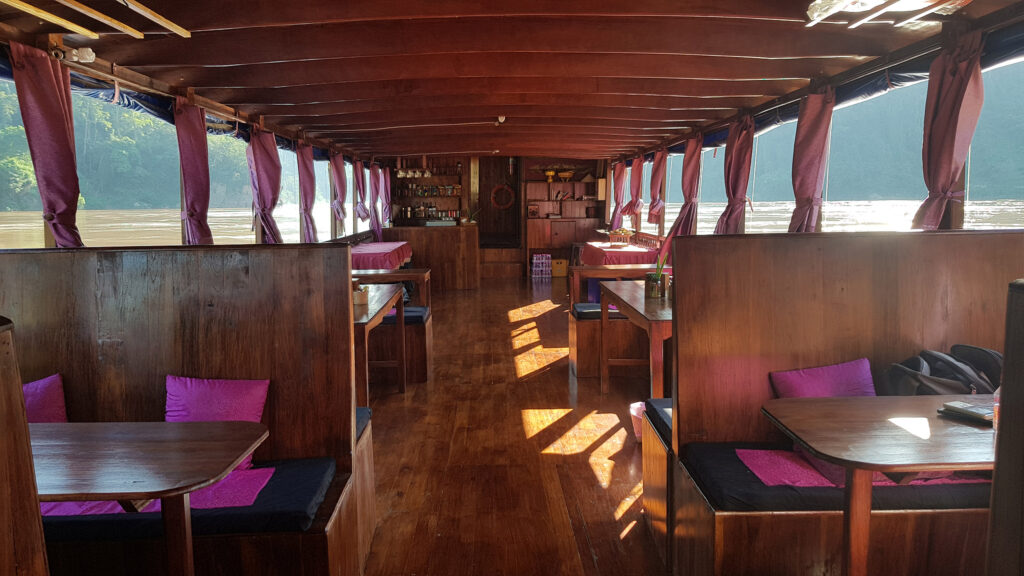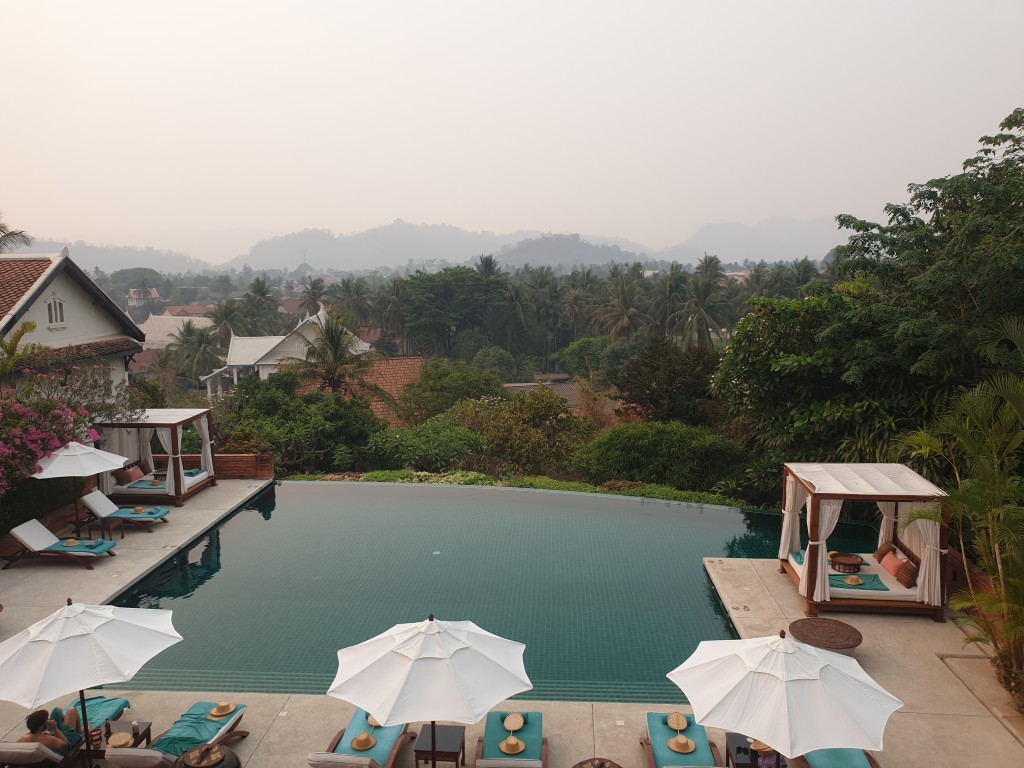
Travel Guide: Luang Prabang – An Insider’s Perspective
Luang Prabang a UNESCO World Heritage town nestled at the confluence of the Mekong and Nam Khan rivers is, without exaggeration, the jewel in Laos’ crown. Let me share what I’ve learned about this magical place that effortlessly blends French colonial charm with traditional Lao architecture and spirituality.
Getting to Luang Prabang
By Air
Luang Prabang International Airport (LPQ) connects with several regional hubs:
- Bangkok (Air Asia, Bangkok Airways)
- Vientiane (Lao Airlines)
- Hanoi (Vietnam Airlines)
- Singapore (Scoot, limited schedule)
Remember what I mentioned about flights—booking separate legs with Bangkok as your hub is usually the most economical approach from Europe or North America.
By Land
Since the opening of the China-Laos Railway in late 2021, train travel has become an excellent option:
- From Vientiane: The railway offers a comfortable 2-hour journey to Luang Prabang station (which is actually in Muang Xay, about 40 minutes from the town center—taxis and shuttle services are available)
- From Northern Thailand: Minivans run from Chiang Mai or Chiang Rai to the Thai-Lao border at Huay Xai, where you can then catch transport to Luang Prabang
By River

The slow boat journey down the Mekong from Huay Xai (Thai border) to Luang Prabang is a classic Lao experience:
- Takes two days with an overnight stop in Pakbeng
- Increasingly comfortable options available, from basic wooden boats to luxury cruises
- Offers breathtaking scenery of the Mekong’s forested hills and glimpses of village life
When to Visit
Luang Prabang has three distinct seasons:
- November to February (Cool dry season): The ideal time to visit with pleasant temperatures and clear skies. December and January can be chilly in the evenings (bring a light jacket).
- March to May (Hot dry season): Temperatures soar (often over 35°C), and farmers’ slash-and-burn practices can create hazy conditions. However, April brings Lao New Year (Pi Mai), which is a brilliant cultural experience with water festivals throughout town.
- June to October (Rainy season): Daily showers are common but typically brief. The countryside turns beautifully lush, and there are fewer tourists. The Mekong rises dramatically, and waterfalls in the region are at their most spectacular.
Where to Stay
Luang Prabang offers accommodation for every budget:
Budget Options (£10-30 per night)
- Phoneheuang Guesthouse: Simple rooms with a family feel near the night market
- Kounsavan Guesthouse: Clean, basic accommodation in a wooden house
- Sysomphone Guesthouse: Good value on a quiet street
- Mad Monkey hostel and others.
Book 102 nights online then call in when you are here if you plan to stay longer.
Mid-range (£30-80 per night)
- Le Sen Boutique Hotel: Lovely pool and excellent service a bit outside the centre
- Villa Chitdara: Traditional wooden house converted to a charming hotel
- Maison Dalabua: Beautiful property with lotus ponds
Luxury (£80+ per night)
- Satri House: Colonial splendour with gorgeous gardens
- Villa Maly: near and similar to Satri House slightly cheaper
- Amantaka: Ultra-luxury in a former hospital building
- La Résidence Phou Vao: Hilltop luxury with stunning views

Remember, as mentioned earlier, many smaller guesthouses don’t appear on booking sites. Walking around the peninsula after arrival often reveals charming family-run places at excellent rates.
Getting Around
Luang Prabang’s historic centre is wonderfully compact and walkable. For longer journeys:
- Bicycles: Available for rent at many guesthouses (£2-3 per day)
- Motorbikes: Easily rented but be aware of local traffic patterns
- Tuk-tuks: Plentiful around town
- Ride apps: inDrive, Maxim, Xanh SM and Loca work well here
Must-See Sights
In Town
Alms Giving Ceremony (Tak Bat)

One of Luang Prabang’s most spiritual traditions happens every morning at dawn when hundreds of monks from the various temples walk through the streets collecting alms (usually sticky rice) from local people. If you wish to observe, please do so respectfully from a distance—unfortunately, the ceremony has become something of a tourist spectacle in recent years, with some visitors behaving inappropriately. I suggest going to streets away from the centre of town, there is likely one near your hotel, ask them.
Mount Phousi
Right in the centre of town, this 100m hill offers panoramic views of the surrounding rivers and mountains. It’s particularly beautiful at sunset, though expect crowds. There’s a small temple (Wat Chom Si) at the summit.
Royal Palace Museum
The former royal residence is now a museum displaying artefacts from Laos’ royal history until the 1975 revolution. The building itself is an interesting blend of Lao and French architecture, and the attached Haw Pha Bang temple houses the sacred Phra Bang Buddha image.
Wat Xieng Thong
The most magnificent temple in Luang Prabang, dating from the 16th century. Known for its sweeping roofs that nearly reach the ground and dazzling glass mosaics. Don’t miss the “tree of life” mosaic on the rear wall.
Night Market

Every evening, Sisavangvong Road transforms into a bustling market with hundreds of stalls selling textiles, ceramics, paintings, and souvenirs. It’s remarkably relaxed compared to markets elsewhere in Southeast Asia—no aggressive haggling here. At the end near vani+ is a food court and another food court opposite that down a popular laneway.
Traditional Arts & Ethnology Centre
A small but excellent museum showcasing the diverse ethnic groups of Laos through their traditional crafts, clothing, and customs.
UXO Visitor Centre

A sobering but important exhibition on the impact of unexploded ordnance from the US bombing campaign during the Vietnam War, which continues to affect rural Laos today. A must visit.
Day Trips
Kuang Si Waterfall
About 30km from town, this multi-tiered waterfall with striking turquoise pools is an absolute must-visit. You can swim in several of the pools (though not all), and there’s also a bear sanctuary at the entrance housing rescued Asiatic black bears. Most visitors arrange a tuk-tuk or shared minivan through their accommodation (around £5-10 return).
Pak Ou Caves
These limestone caves overlooking the Mekong house thousands of Buddha images that have been placed there over centuries. The journey there—typically by boat up the Mekong—is as enjoyable as the destination itself.
Elephant Sanctuaries
Several ethical elephant experiences are available near Luang Prabang, focusing on observation and care rather than riding. MandaLao, Elephant Village and Elephant Conservation Center are both committed to elephant welfare.
Weaving Villages
Ban Phanom and Ban Xang Khong are known for their traditional silk and cotton weaving and papermaking. They offer a glimpse into traditional crafts still practiced today.
Whisky Village (Ban Xang Hai)
Known for its production of Lao rice whisky (lao-lao), this village is often combined with a visit to Pak Ou Caves as it’s on the way.
Food and Drink
Luang Prabang has its own distinctive cuisine, different from southern Laos or even Vientiane. Don’t miss these local specialties:
- Mok Pa: Fish steamed in banana leaves with herbs and spices
- Orlam: A stew with buffalo meat, vegetables, and wood ear mushrooms
- Jaew Bong: A fiery dipping sauce made from dried buffalo skin, chillies, and herbs
- Khai Paen: Crispy riverweed snacks with sesame seeds
- Khao Soi: A noodle soup with a rich pork broth (different from Thai or Burmese versions)
Where to Eat

Local Restaurants
- Tamarind: Offers Lao tasting platters and cooking classes
- Bamboo Tree: Excellent traditional dishes in a garden setting
- Xieng Thong Noodle: Simple noodle shop near Wat Xieng Thong
International Options
- Dyen Sabai: Lovely garden restaurant across the bamboo bridge (seasonal)
- Jungala: a new laid-back garden bar/restaurant with river views
- Saffron Coffee: Great coffee from beans grown by local farmers
Street Food
The evening food market near the night market offers a variety of affordable local dishes. Look for:
- Grilled meats on skewers
- Papaya salad (tam mak hoong)
- Sticky rice in bamboo
- Fresh fruit smoothies
Practical Information
Money
ATMs are plentiful in Luang Prabang, though they charge foreign card fees (typically around 20,000-30,000 kip. The local currency is the Lao kip, but many places also accept Thai baht and US dollars for larger purchases.
Internet
Wi-Fi is widely available in guesthouses, cafes, and restaurants, though speed and reliability can vary. Local SIM cards with data are inexpensive and easy to purchase.
Opening Hours
Most temples are open from around 8am until 5 or 6pm. Many shops close for a few hours during the hottest part of the day, especially outside of peak tourist season.
Dress Code
When visiting temples, shoulders and knees should be covered for both men and women. Some temples provide sarongs to borrow if needed. Keep your shirt on in town.
Local Customs
- Remove shoes before entering temples or private homes
- Don’t touch anyone on the head (considered sacred)
- Pass items with both hands as a sign of respect
- Ask permission before photographing monks or local people
Off the Beaten Track
If you’re staying longer or returning for a second visit, consider these less-visited spots:
- Go and see Tiger Trail and chat with the friendly staff about treks, kayaking and bike rides
- Pottery Village (Ban Chan): Cross the Mekong to visit this village specializing in traditional pottery
- Nahm Dong Park: Features zip lines, hiking trails, and natural pools
- Tat Sae Waterfall: Less visited than Kuang Si but beautiful in its own right, especially during rainy season
Longer Excursions from Luang Prabang
- Nong Khiaw: A riverside town about 4 hours away with dramatic limestone karsts and hiking opportunities
- Muang Ngoi: Only accessible by boat from Nong Khiaw, this sleepy riverside village offers a glimpse of rural Lao life
- Nam Et-Phou Louey: The largest national protected area in Laos, offering wildlife spotting night safaris
Responsible Tourism Tips
- Support local businesses rather than international chains
- Minimize plastic waste by carrying a refillable water bottle (filtered water refill stations are available)
- Learn a few Lao phrases – locals genuinely appreciate the effort
- Consider a homestay in a village to experience authentic Lao culture
- Join a clean-up walk – several cafes organize regular litter picking events
Final Thoughts
Luang Prabang moves at its own pace—slower, more contemplative, and more connected to tradition than many other Southeast Asian destinations. Give yourself time to settle into this rhythm. Allow for long lunches overlooking the Mekong, peaceful temple visits in the early morning mist, and idle afternoons with a good book in a riverside cafe.
While many visitors spend just 2-3 days here as part of a whirlwind tour of Southeast Asia, I’d recommend at least 5-8 days to truly appreciate the town and its surroundings. There’s something magical about this place that tends to hold onto people—what was planned as a short visit often turns into a much longer stay.
As we say in Laos, “bor pen nyang” (no worries) – let Luang Prabang work its spell on you.
Health, Laos, Laos Train, Luang Prabang, Travel
Comments RSS Feed